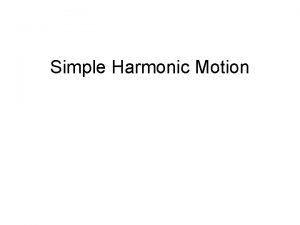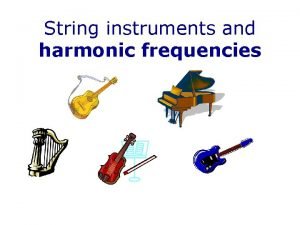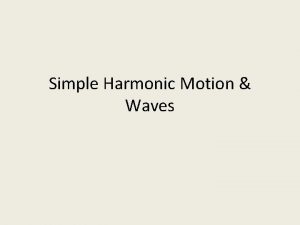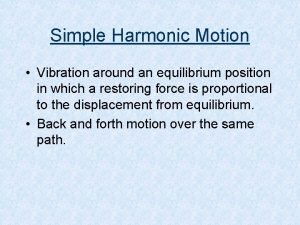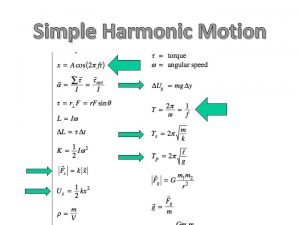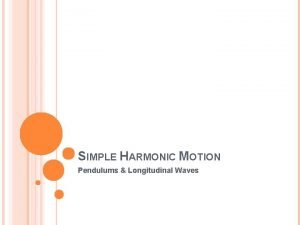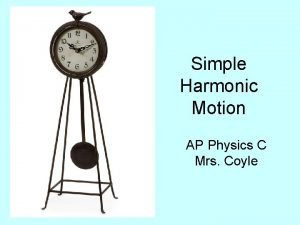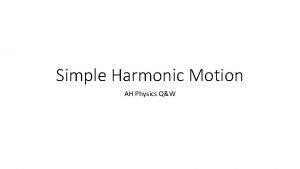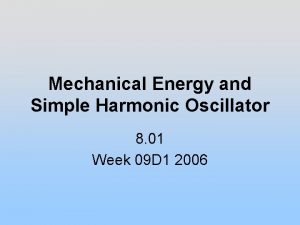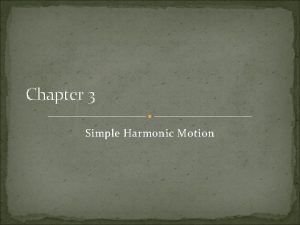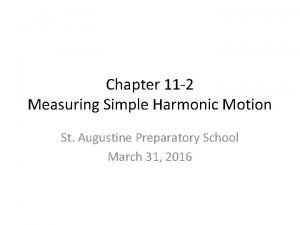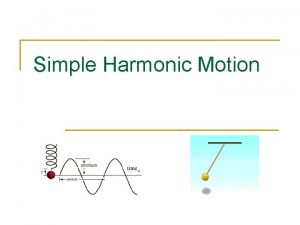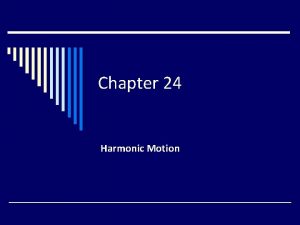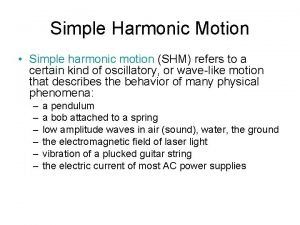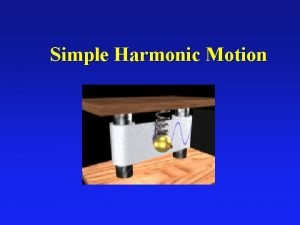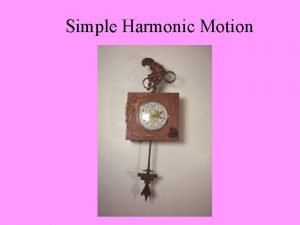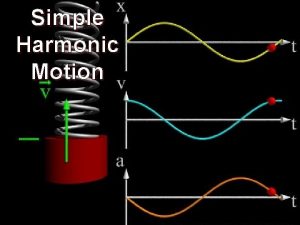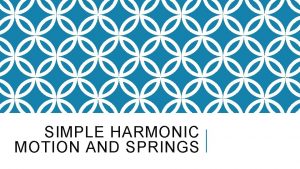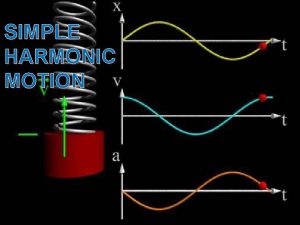Simple Harmonic Motion Spring Constant K The constant












- Slides: 12

Simple Harmonic Motion

Spring Constant, K The constant k is called the spring constant. SI unit of k = N/m.

HOOKE'S LAW The restoring force of an ideal spring is given by, where k is the spring constant and x is the displacement of the spring from its unstrained length. The minus sign indicates that the restoring force always points in a direction opposite to the displacement of the spring.

Simple Harmonic Motion When there is a restoring force, F = -kx, simple harmonic motion occurs.

Position VS. Time graph

Amplitude is the magnitude of the maximum displacement.

Period, T For any object in simple harmonic motion, the time required to complete one cycle is the period T.

Frequency, f The frequency f of the simple harmonic motion is the number of cycles of the motion per second.

Oscillating Mass Consider a mass m attached to the end of a spring as shown. If the mass is pulled down and released, it will undergo simple harmonic motion. The period depends on the spring constant, k and the mass m, as given below,

How Do Astronauts Weigh Themselves While in Orbit? Astronauts who spend long periods of time in orbit periodically measure their body masses as part of their health-maintenance programs.

How Do Astronauts Weigh Themselves While in Orbit? Astronauts who spend long periods of time in orbit periodically measure their body masses as part of their health-maintenance programs. On earth, it is simple to measure body mass, with a scale. However, this procedure does not work in orbit, because both the scale and the astronaut are in free-fall and cannot press against each other.

Mass of an Astronaut This device consists of a spring-mounted chair in which the astronaut sits. The chair is then started oscillating in simple harmonic motion. The period of the motion is measured electronically and is automatically converted into a value of the astronaut’s mass, after the mass of the chair is taken into account.
 Spring constant formula
Spring constant formula Shm formula sheet
Shm formula sheet Tension wave
Tension wave Simple harmonic motion vocabulary
Simple harmonic motion vocabulary Equilibrium position in shm
Equilibrium position in shm Reference circle simple harmonic motion
Reference circle simple harmonic motion What unit is period measured in
What unit is period measured in Simple harmonic motion formula
Simple harmonic motion formula Harmoninic ah
Harmoninic ah Shm equations
Shm equations Simple harmonic motion formula
Simple harmonic motion formula Simple harmonic motion formula
Simple harmonic motion formula The body of a 1275 kg car is supported
The body of a 1275 kg car is supported
